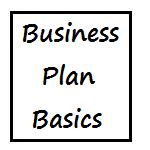 If you’re starting a business, everyone knows that you have to have a business plan, right? Well, you may be surprised to hear that many of the greatest businesses we know today were started without any business plan. In fact, in my opinion, writing a business plan is not the first, but the eighth step in starting a business. That being said, I do think it’s important to have a business plan, even if it’s not a fancy 100-page document. The process of putting the plan together, if not the physical plan itself, can have great value in how you think about and grow your business. So, if it’s a good idea to develop a business plan, what should the plan contain?
If you’re starting a business, everyone knows that you have to have a business plan, right? Well, you may be surprised to hear that many of the greatest businesses we know today were started without any business plan. In fact, in my opinion, writing a business plan is not the first, but the eighth step in starting a business. That being said, I do think it’s important to have a business plan, even if it’s not a fancy 100-page document. The process of putting the plan together, if not the physical plan itself, can have great value in how you think about and grow your business. So, if it’s a good idea to develop a business plan, what should the plan contain?
The contents of a business plan are somewhat subjective and what is considered essential will vary based on the expected audience for your plan. Even so, there are some elements of a business plan that are required, regardless of whom the audience will be. Those essential components include the following:
Executive Summary: all plans should have a brief executive summary at the beginning, and given that many readers will never make it past this section, it should be concise, well-written and full of key information that will pique the interest of the reader.
Problem Description: this section must make very clear the problem that your product and/or service will solve. It should leave no doubt that you are not speculating that such a problem exists, but rather have done sufficient primary and secondary market research to confirm that there is a real need in the market, and one that people or companies are willing to pay you to solve.
Overall Market Description: here you will want to provide as much pertinent information as you can about the market. It’s key to keep the information relevant to the problem you are solving. Try to get as much current data as you can and try to size the market, both in terms of the number of potential customers and the potential dollar volume per year. Provide an indication of expected growth or decline in the market over the next five to ten years.
Market Niche(s): Now that you’ve provided an overview of the market, it’s time to talk about the various segments or niches in the market and specifically, go into greater detail regarding those you expect to target. Discuss why these segments are most relevant and attractive from your perspective and indicate how you expect to go after them. It is also important here to provide an indication of the size of these segments and how they fit into the overall market that you described above.
Products/Services: While you may have touched briefly in Problem Description on the products and services you will be offering, this is where you’ll go into greater detail, including how they will solve market needs better/cheaper/faster than the solutions currently available. Here you will want to cover the important characteristics of the offering, as well as the various versions you expect to bring to the market, based on the unique needs and desires of the particular niches you will be targeting. It is in this section that you will also cover the pricing of your offering and why your intended price points make sense in the context of the existing market and its expected evolution.
Competition: The first key point to make regarding competition is that as you think through and develop this section, remember that there is always competition. While there may be no competitors do exactly what you are expecting to do in the market, if a need exists, without a doubt there are alternative or substitute solutions being proposed to the market by other providers. There are very few situations where this is not the case. So, do yourself a favor and acknowledge that there is competition, however minimal or ineffective it may be. You will want to describe the existing competitors and their offerings, including the pricing. You will also want to point out their strengths and their deficiencies and where you think your offering will be more appealing to the market. Base your statements on primary and secondary research, not foundationless assertions. Don’t business plan “in a vacuum”.
Marketing Strategy/Tactics: What will be your marketing strategies and tactics for selling your products and services to your target market? It is in this section that you will exhibit your market knowledge and insights into the buying habits of the target market. You will discuss the typical buying process/cycle for the products and services you are introducing and you will describe any innovations you expect to bring to this process. For example, does your target market respond best to being sold through the internet, or have they never bought anything in your space unless it was sold by a salesperson face-to-face? A lot of the answers here will of course depend on the complexity and price point of your offering. If you expect to take a very innovative approach to marketing and selling to your target market, your argument will be a lot more compelling if you have done tests and primary market research to prove that the market is open to such an approach. Human behavior is not easy to change, and this is not lost on potential investors.
Management Team: It has been said many times that a potential investor cares more about having a good management team than about having the perfect product or service offering. In fact, it has been said so much, that it is largely taken as a truism by those in the entrepreneurship field. Why would this be? Well, veteran entrepreneurs and investors know that very few successful businesses end up being successful based on the exact formulation on which they were founded. Typically there are many course corrections that need to take place – the business and the offering morph as the founders and their team get more feedback from the marketplace. Given this reality, no one expects a perfect formulation of the business at the outset, but most realize that if the management team is not apt, it will have a very hard time making the ongoing adjustments necessary to become successful. So, in this section, you must describe your management team and why you believe that in this particular marketplace, you think your team is the right one to make your company a success as the business grows and evolves.
Financial Summary: This is the section of the plan that gives non-financial and non-quantitative people the most pause. In fact, in my observation, this is the section that causes many to not even bother starting the business plan. They don’t understand it and they realize that it will not be an easy road to understand it. That said, if you are starting a business, you must have a basic understanding of break-even, profitability, and financial statements if you want to increase your probability of having a successful business. You don’t need to become a “numbers person” or a “quant jock” overnight, but you do need to be willing to step outside your comfort zone a bit, so you can understand how the world keeps score in business, which is by use of financial information. There are programs to help you put the financials together and there are also people out there who will help you put them together quite affordably. However you decide to approach it, make sure that you are not simply handing it off to someone else, without developing at least a basic understanding of the subject matter yourself. It is very difficult to effectively run an enterprise, if you do not at least understand the basics of how to “keep score”.
The essential elements that you’ll want to include in your Financial Summary include the following:
Break-even Analysis: a calculation of the point at which the company covers all its fixed and variable costs. Although it may look and sound daunting, it is a very simple calculation, especially when you’re just “thumbnailing” it. You’d do yourself and the readers of your plan an injustice if you didn’t do this calculation.
Key Assumptions: a description and quantification of those elements about which you don’t have certainty that will play a role in your financial model. Unless you possess supernatural powers to know the unknown and predict the future, you will not be certain about the values of all the variables that will go into your financial projections. For example, you will not know with certainty at what price or rate your offerings will sell in the marketplace, so you’ll need to make estimates or assumptions. You will have many assumptions, with some having a very important impact on your projections and others having a minimal impact. In this section you will want to focus on the important assumptions and describe them in as much detail as practical, to give yourself and the readers of your plan an indication of their variability and their importance in your financial projections.
Projected Financials: here, based on your assumptions, you will project the three major financial statements: the Income Statement, the Balance Sheet, and the Cashflow Statement. The Income Statement provides the reader with a window into the expected revenues, costs and profitability of the company. The Balance Sheet provides a snapshot of the company’s assets, liabilities and equity at a particular point in time. The Cashflow Statement does exactly what its name implies – it provides the reader with a window into the cashflows based on the company’s operating, investing and financing activities. The three financial statements are inextricably linked and you’ll need to project all three to provide a full understanding of the expected financial performance of the venture.
Key Financial Indicators: Based on the projected financial statements, in this section you will provide the reader with financial ratios that can yield insights into the potential financial strengths and weaknesses of the venture. These ratios indicate such things as liquidity, profitability, return on equity and asset utilization, among others, and are important for gaining an understanding of the likely financial attractiveness of the venture.
Capital Requirements: One of the reasons you’re creating a business plan may be to raise money from equity investors or get a loan from a bank. Any potential investor will be very interested in the projected finanical statements you created above. They will also want to see a more specific breakdown of the capital requirements you see for the venture, into the future. The relevant time horizon will vary, but you’ll want to project this for at least five years. These capital requirements can result from several potential factors, but the largest chunks are likely related to expenditures on equipment and facilities, startup costs, including the hiring of key senior and technical staff beyond the founders, and working capital.
Conclusion
So in the end, the business plan is not so complicated. It will however take a significant amount of time and effort to complete to a reasonable standard. Sure, you could take shortcuts and put a lot of guesswork into your plan, but that would serve neither you nor the readers of the plan. Particularly in the area of understanding the needs and behavior of the market, put the time in to do sufficient primary and secondary market research to establish that there is actually going to be demand at a profitable pricepoint for your offering. If there is no demand for what you bring to market, nothing else will matter and you will have wasted a great deal of time, effort and money.
We’d love to hear your comments and question about developing your business plan. Leave a comment below or in the top right hand corner of this post.
Paul Morin
CompanyFounder.com
paul@companyfounder.com
Twitter: @companyfounder.




What a great resource!
I’m happy that you found it useful. We try to provide quite a bit related to business and strategic planning, in various forms: templates, posts, audio, video, etc. Check back frequently.
You mentioned that the business plan was the eighth step in starting a business. Is it possible for you to outline the previous seven?
Sure, Tim, no problem. There’s a lot more detail behind these, which I cannot go through at the moment, but the way I see, teach and coach it, the following come before putting together a formal business plan. You can find other posts on this blog that cover a lot of these topics.
1.) Understand profitability and break-even — too many people go into business not understanding these basic concepts.
2.) Understand upside goals and potential — what kind of business are you trying to create? Does the business you are starting right now match your objectives?
3.) Screen and sort you ideas/opportunities using criteria that make sense.
4.) Understand the psychology of markets and niches.
5.) Develops products and/or services that meet a true market need.
6.) Understand and select appropriate marketing strategies.
7.) Deploy appropriate marketing tactics.
8.) Create a full, formal business plan.
9.) Strive for operational excellence.
10.) Replace yourself/sell your “baby”.
I hope this helps. Feel free to contact me if you have other questions.
Paul
https://www.companyfounder.com is bookmarked for future reference!
betathome
The best way to show bankers, venture capitalists, and angel investors that you are worthy of financial support is to show them a great business plan. Make sure that your plan is clear, focused and realistic. Then show them that you have the tools, talent and team to make it happen. Your business plan is like your calling card, it will get you in the door where you’ll have to convince investors and loan officers that you can put your plan into action.